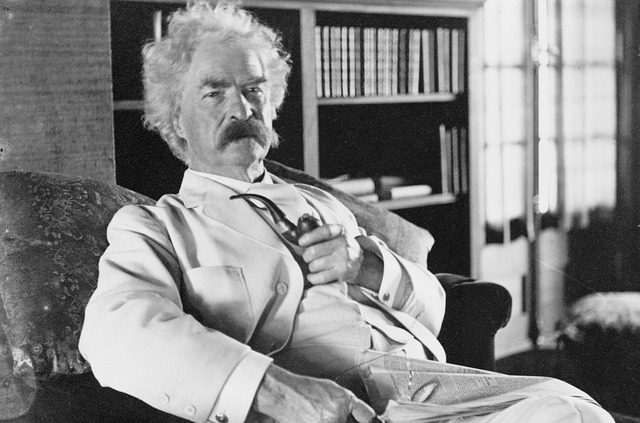We meet with many of sales and marketing leaders across the country. While there are some holdouts, most of them understand and buy into the concepts of inbound marketing and lead nurturing. The most common objection that we hear is, “We don’t know where to start. It’s all a bit overwhelming. When are we going to have the time to create all that content?”
It’s not as difficult as it may appear. As Mark Twain said, “The secret of getting ahead is getting started.” Let’s get started.
Step 1: Select a target market
Analyze your funnel and choose a market segment of stalled leads.
Step 2: Select a title (CFO, CIO, VP Supply Chain) to target from these leads
Best practices for lead nurturing suggest that you address the pains points and challenges of a target position within an organization. Different things keep a CFO awake at night than a VP of IT. You want to aim your nurturing campaign and content at a specific title or a group of titles that all have similar issues.
Step 3: Select a solution for the campaign
If your company only has one solution, this step will be simple. If your company is like most companies, you sell multiple products and/or services. Select one for this campaign.
Step 4: Categorize Your Existing Content
Take a look at your existing content for this product or service. Don’t lose sight of the target market and title. You probably have content that you can reuse for lead nurturing campaigns. Divide your content into four categories, representing the four stages of the buying cycle. The four stages of the buying cycle are:
- Awareness
- Education
- Comparison
- Due Diligence
One of the key concepts in lead nurturing is to offer prospects content matched to the stage of the buying cycle that they are in. An early stage buyer has different interests than a late stage buyer. For example, once a buyer has determined that they have a problem and that there are solutions to address the problem, and they have zeroed in on a specific solution, only then are they interested in exploring the vendor and making sure that the vendor has a solid track record with customer service. Offering a buyer information about your fantastic customer service early in the sales cycle is not going to help. At this point, they haven’t even concluded that they need a solution. Why would they care about the vendor’s customer service at that point?
What type of content is appropriate for each stage of the buying cycle?
Awareness Stage
At this stage, the buyer may or may not be aware that they have a problem or issue. The type of content that works well at this stage is white papers or articles that discuss industry trends, emerging solutions for common problems for that industry, or for that job title.
Education Stage
At this stage, the buyer realizes that there are solutions to their problem and decides to learn more about those solutions. The type of content that works well at this stage is content that defines the issues or problems that this solution can solve. Also good is content that tells before and after stories. Webinars and white papers work well, as do eBooks. They key at this stage is to avoid heavy selling or telling too much about your specific product or solution. You want to establish the category of solution for their problem.
 Comparison Stage
Comparison Stage
At this stage, the buyer is comparing competing solutions, approaches, or services. They are now ready to hear about your product/service’s features and functionality. They are also interested in head-to-head comparisons, especially those written by third parties.
Due Diligence Stage
At this stage, the buyer often has to follow their company’s process for procuring a product or service. They need to justify their decision, which up until this point may have been driven by emotions, and build a logical business case for the purchase. They are interested in content with ROI statistics, vendor success stories, and testimonials. This is the time to tell them about your company.
So, take a look of your existing content. A lot of that content will fit nicely into one of the four categories above.
Step 5: Fill in the Gaps in your Content
Once you finish categorizing your existing content, you may find that you have holes. You need to create new content to fill these gaps. You may be able to re-purpose an existing piece of content by doing a minor rewrite so that it fills a hole. Maybe you have a good piece for stage three of the buying cycle, but it is aimed at the wrong title. A quick rewrite can turn this document into one that is appropriate for this campaign.
Step 6: Design your nurturing campaign
You can develop very complex nurturing campaigns with many steps, but since you are just getting started, let’s keep it simple. Let’s design a four step nurturing campaign. Write an email for each step in the buying cycle, and offer one of your content pieces in each email.
Step 7: Create a landing page for each offering
A landing page is a web page that has more information about the content or event that you are offering the prospect. If your prospect clicks on the link in your email, this is where they land. You typically ask for some minimal contact info, but not always. This is where the contact downloads the content, or signs-up for the webinar or other event.
 Step 8: Launch the campaign
Step 8: Launch the campaign
With your content, emails and landing pages all ready to go, you are now ready to launch the campaign. Send out that first email and monitor the results.
Step 9: Track your results
Most popular email campaign services will tell you whether the email was opened, and whether the recipient clicked on the link in the email. Some tools, like HubSpot, will also tell you if the prospect went to your landing page and whether they downloaded your content or if they filled out a form with their contact info.
Monitoring your results is critical. If nobody opened your email, you probably need to try a different subject line for your email. If they opened the email but did not click on the link, you might need to improve the email text, or change the content that you are offering.
Step 10: Revise the campaign based on your results
You will need to try different things to discover what works best for your target market and your products or services. Do not be afraid to experiment. Many marketers do A/B testing to determine which email subject line works best, or which landing page is most effective. Having a good tool in place to track your results is key.
Summary
Mark Twain said, “The secret of getting ahead is getting started.” Or, as Nike says, “Just Do It.” Get started with your lead nurturing program today.
Do you have experience with starting a lead nurturing campaign? We’d love to hear about it here. Or, maybe you still have questions about getting started. Enter those questions below. We’ll do our best to reply quickly.
Espresso B2B Marketing helps companies generate more leads, and higher quality leads, using a mix of inbound and outbound marketing techniques (whatever works and whatever is cost-effective).
